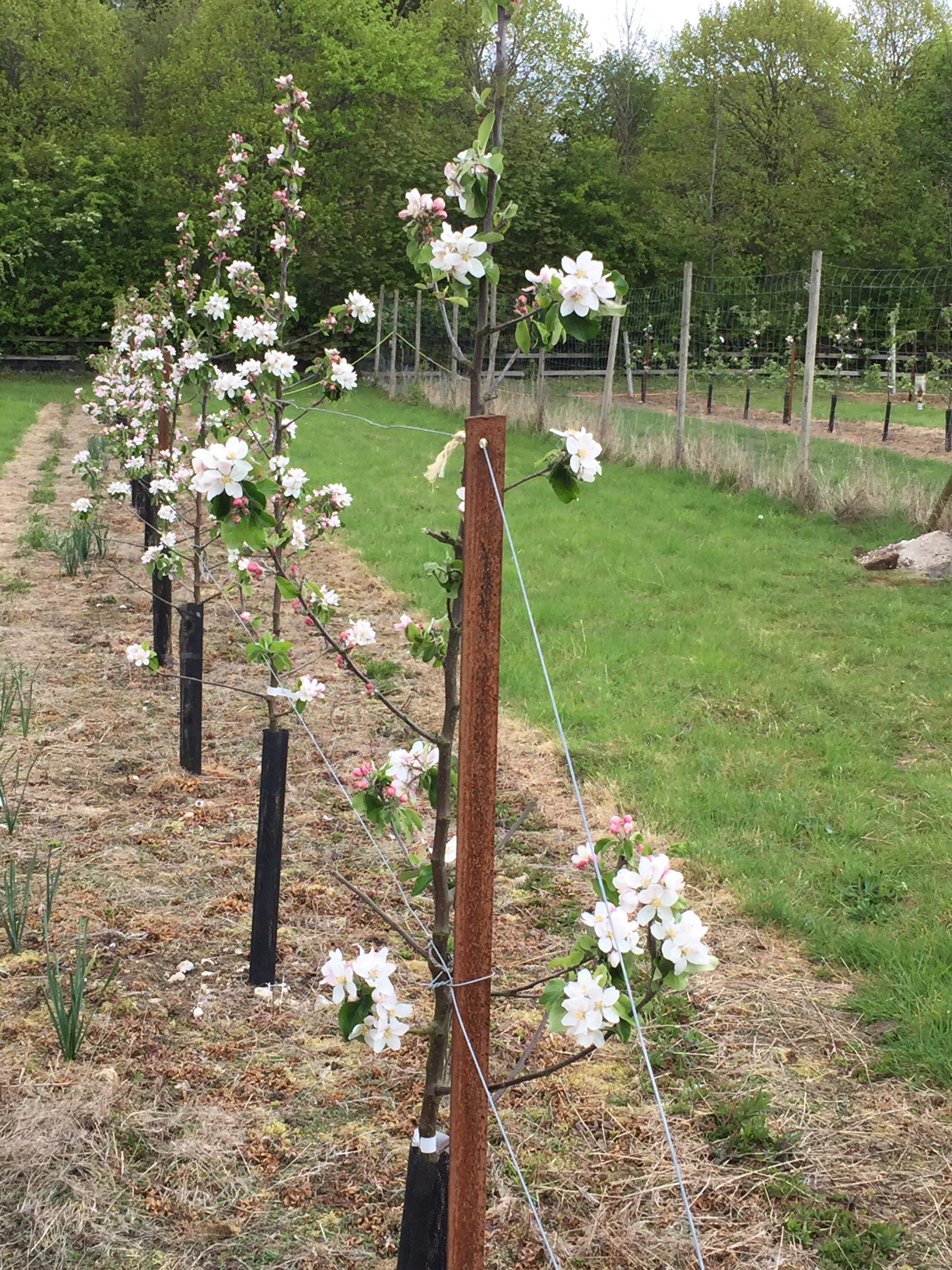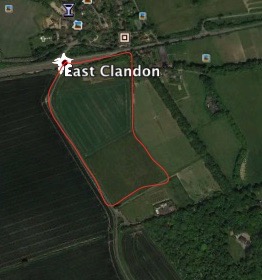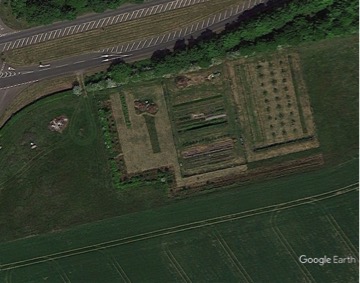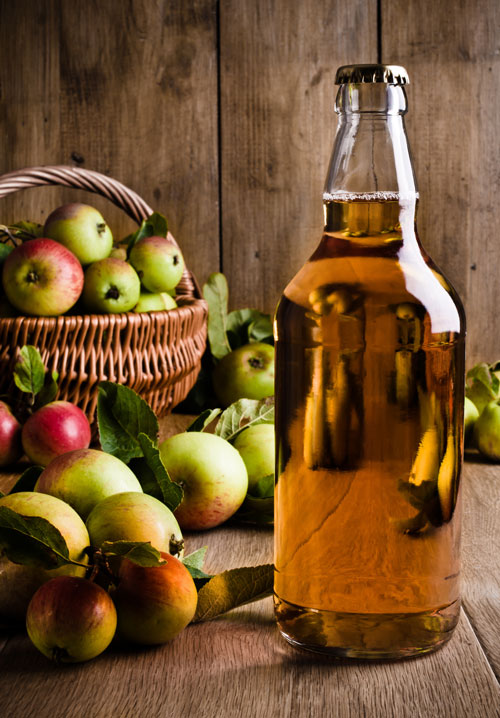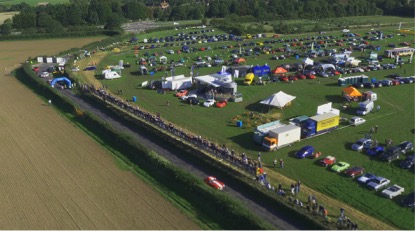About Orchard Rise
I purchased Orchard Rise in 2006. Then it was simply a 19 acre (7.6 ha.) unimproved and neglected pasture which, I subsequently discovered was totally infested with ragwort.
I started planting trees both fruit and indigenous hardwoods in the winter of that year. The first cider apples were planted in the winter of 2015/16.
This shows one of the rows of apples in the new planting. Actually, these apples are Katy, an early juicing apple, planted as part of the portfolio of apples to provide the right type of juice for cider making.
The farm is believed to have belonged originally to the Hatchlands Estate, which is now operated by the National Trust.
It is situated outside East Clandon, at the foot of the Surrey Hills, bounded on the North side by the A246 and on the West by Staple Lane. In the 2012 Olympics, the cycle race came down the A246, turned the corner onto Staple Lane where they encountered the first proper uphill climb.
There are four fenced sections running East from the entrance gate. The first is an approximately L-shaped enclosure which contains the windbreak, a “shaw” composed of 4 lines of hawthorn, hazel, mixed indigenous hardwoods and hornbeam with some birch.
The second section is mainly used to produce soft fruit and flowers for domestic consumption.
The third section is used for growing fruit to test out various varieties and cultural methods.
The fourth and largest section comprises the cider apple orchard.
The Google Earth photo shown here is out of date and so does not show the fourth section planted to cider apples.
The Cider Apple Business
The business idea came from Peter Mitchell of Peter Mitchell F&D Ltd. http://www.mitchell-food-drink.co.uk/ who does consultancy work in the cider industry and runs training courses for cider makers. Peter had noticed that while there were a lot of budding cider makers from London and the home counties, there were no local sources of cider apples. Hence the idea was born to grow cider apples in Surrey for sale to home brewers.
Peter suggested the mix of different types of cider apples which were translated into specific varieties by John Worle, a renowned West Country grower of cider apple trees www.johnworle.co.uk
John suggested a mix of traditional and 21st century cider apple varieties which would give a wide spread of types and harvesting dates.
The improved grassland section
The remainder of the lower (northern) piece of Orchard Rise, about 10 acres (4 ha.) has been put down to an improved clover/rye mixture which produces an impressive amount of fodder which is sold to a neighbouring farmer for his cattle.
The Meadow section
The upper (southern) section is intended to be developed as a traditional, organic chalkland meadow with a view to either selling the hay as such or harvesting seed for sale. The main problem is that the fertility of the soil is still very high which means that tall grass species tend to dominate and crowd out the annual and perennial flower and herb species. I have made some progress by taking off a hay cut every year for the last ten but there is still some way to go.
The second problem is that there are still some viable ragwort seeds in the soil and, at the moment, I am still having to spot spray with Roundup (glyphosate). The numbers are reducing year by year and I will soon be in a position to pull rather than spray.
The Shere Hill Climb
Four years ago, I was approached by the organisers of the Shere Hill Climb http://sherehillclimb.co.uk/ who were looking for a piece of land next to Staple Lane which could be used to park the many hundreds of cars for the spectators and participants in the Hill Climb. They have run this event now for three years using Orchard Rise as their car park and paddock. This fits in well, since the hay\silage crop has been taken before the event starts and so the field is covered in short grass. The ground nesting birds have long fledged.

